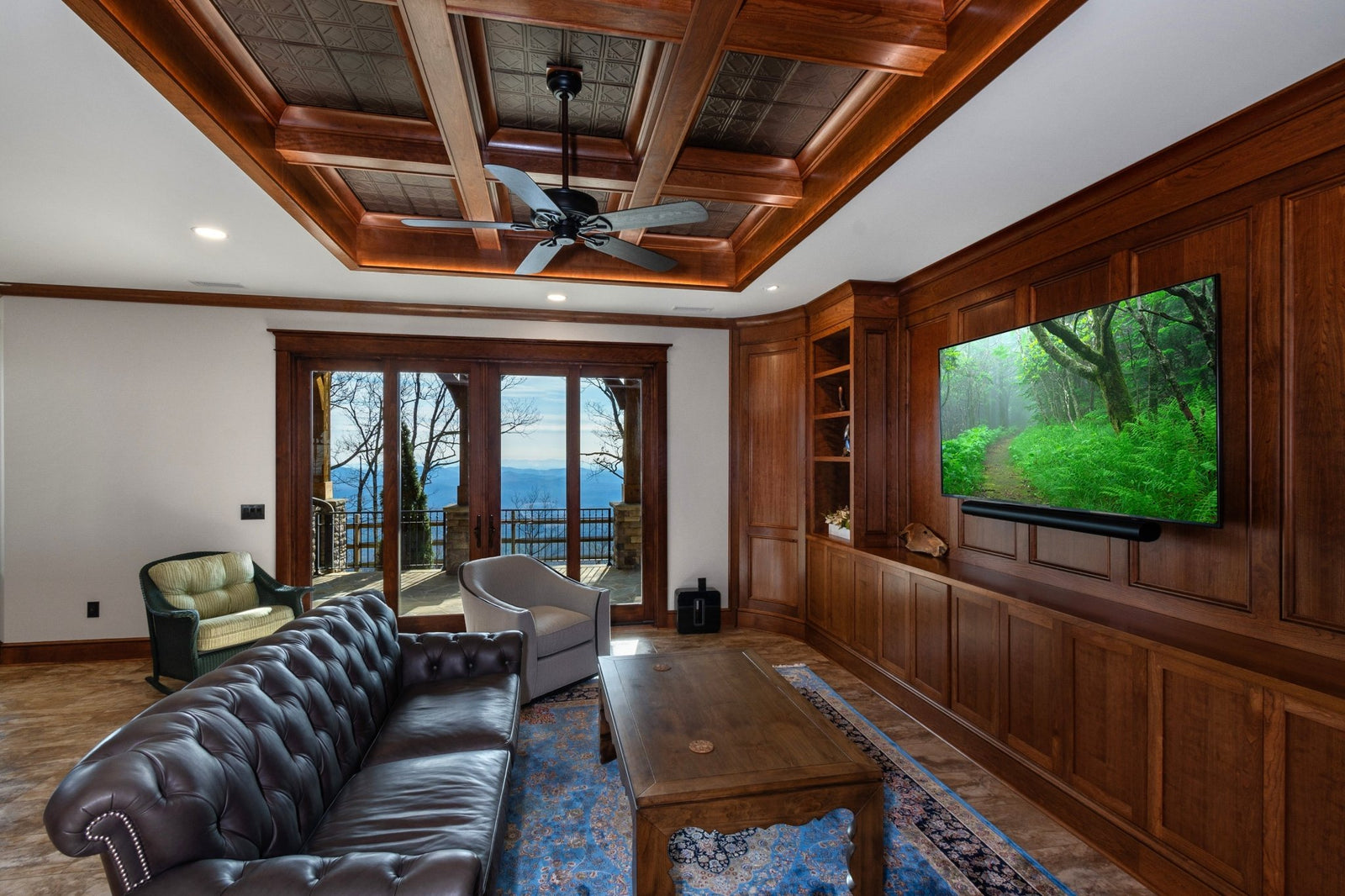Tin ceiling tiles are admired for their timeless beauty, intricate detail, and ability to elevate the look of a room. Yet one common concern people have before installing them is whether they make a space noisier. Do tin ceiling tiles actually create echo? The answer is both yes and no, depending on how they’re used and what else is in the room.
To understand why, it helps to look at how tin interacts with sound.
How Sound Works with Tin
Sound is shaped by two main properties: how much a material absorbs noise and how much it blocks it.
-
Noise Reduction Coefficient (NRC) measures absorption, with a scale from 0 (all sound reflected) to 1 (all sound absorbed). Materials rated 0.50 or higher are considered good at soaking up sound, while those at 0.20 or below reflect most of it.
-
Ceiling Attenuation Class (CAC) measures how well a ceiling keeps noise from traveling to other rooms. On this scale, 25 is poor blocking and 50 is excellent.
Tin ceiling tiles fall toward the reflective end of the NRC scale. Their rating of around 0.10 means they bounce sound back into a room instead of absorbing it. Compared to mineral fiber tiles, which often score around 0.70, the difference is clear. However, tin tends to perform very well in CAC ratings, meaning it keeps sound contained in one space rather than letting it bleed into other areas of a building.
So, while tin ceilings may reflect sound within a room, they often do a much better job than plaster or drywall at keeping noise from traveling between floors.
Do They Always Cause Echo?
In an empty room with hardwood floors, bare walls, and minimal furnishings, tin ceilings will reflect sound and can create a noticeable echo. But that doesn’t mean they always will. In fact, once you furnish a space with rugs, curtains, bookshelves, or upholstered seating, those softer surfaces absorb and scatter sound. The result is a much warmer and more balanced acoustic environment.
In many homes and businesses, the difference between regular tin ceiling tiles and specially treated acoustic tiles may not be very noticeable once the room is lived in and decorated.
Acoustic Tin Tiles as a Solution
For spaces where sound quality is a priority—like restaurants, offices, or even a home theater—there is an option that combines the beauty of tin with modern sound management. Acoustic tin ceiling tiles are designed with micro-perforations that allow sound waves to pass through into an acoustic pad installed behind the tile. These pads absorb the noise instead of bouncing it back into the room.
The effect is impressive: while standard tin tiles have an NRC of 0.10, acoustic versions with 2-inch pads can reach an NRC rating of up to 0.85. That puts them on par with or even better than many traditional acoustic ceiling materials. And since pads cost around $9.00 each (or about $2.25 per square foot), upgrading to acoustic tin is often more affordable than people expect.
Balancing Sound with Design
If you prefer the look of standard tin tiles but want to reduce echo, there are several practical steps to improve acoustics without sacrificing style.
-
Layer soft furnishings such as rugs, drapes, or fabric wall hangings. These elements absorb sound and reduce harsh reflections.
-
Add insulation above the tiles if you’re using a drop ceiling system. Filling the cavity between the tin and the structural ceiling creates a more effective sound barrier.
-
Combine materials thoughtfully, pairing reflective tin with wood, fabric, or upholstered surfaces so the room feels balanced.
By approaching your ceiling as part of the room’s overall design, it’s possible to enjoy the character of tin while maintaining comfortable acoustics.
Tin Ceiling Tiles Add Beauty To Your Space Without Extra Noise
So, do tin ceiling tiles echo? On their own, yes—they reflect sound and can make a room feel lively or even sharp if no other materials are present to soften the acoustics. But the story doesn’t stop there. Tin ceilings also excel at blocking sound between rooms, and with the right balance of furnishings—or by choosing acoustic tin tiles with pads—you can enjoy all the decorative advantages of tin without sacrificing sound quality.
In most furnished spaces, the difference is subtle, and tin’s charm more than outweighs any acoustic challenges. For those who want both beauty and quiet, the solution is simple: pair tin with the right supporting materials, and your ceiling will be as comfortable to live with as it is stunning to look at.

